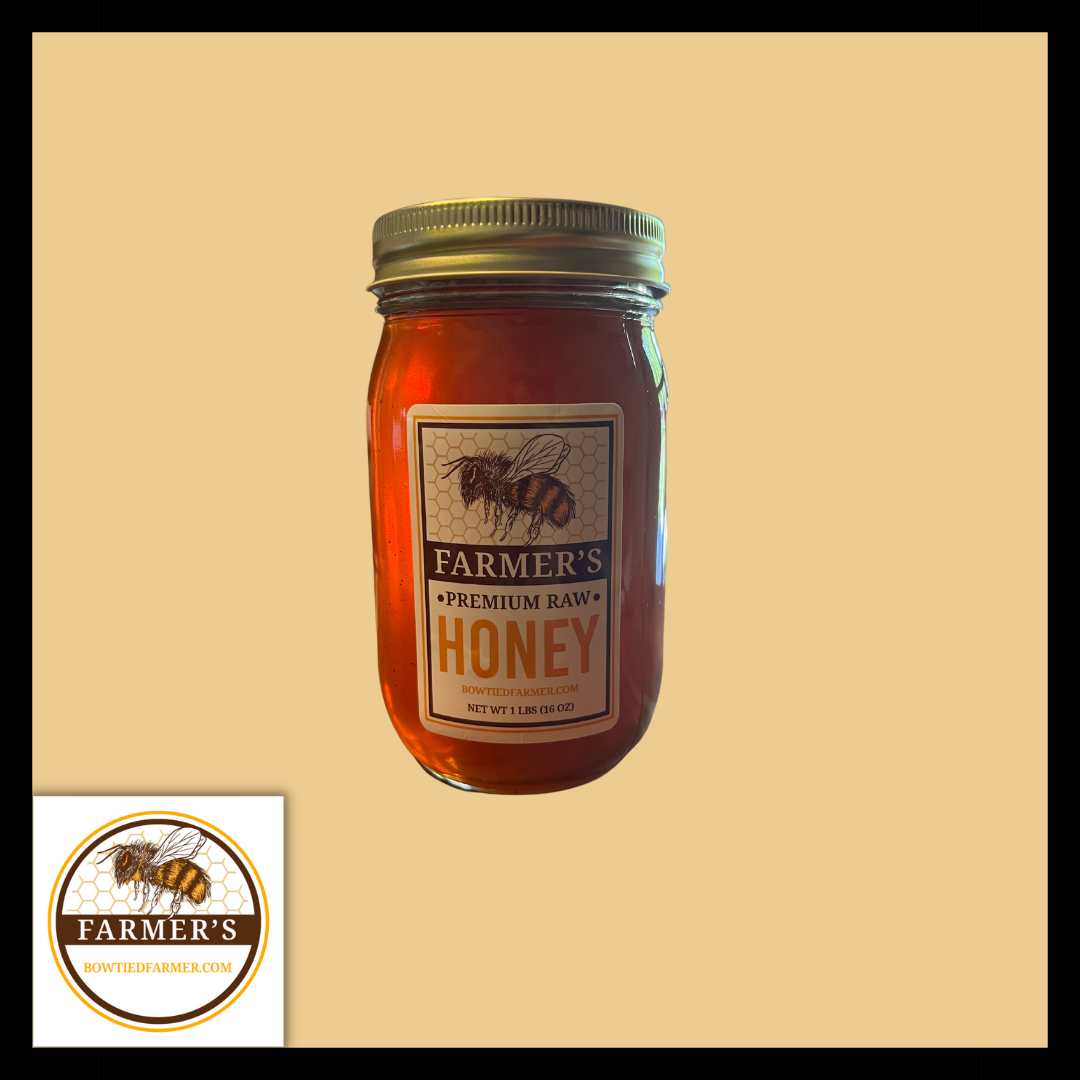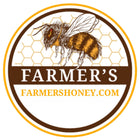Most people have heard about the benefits of eating raw honey, but you probably don't know what raw honey actually is.
So, What is pure raw honey? What does it mean on the honey jar labels? We'll help you to learn the basics of honey labeling so that you can easily find a great product.
Be sure to check out some of our best collections. Everything you see on this site starts with raw honey sourced directly from the bees on our farm.
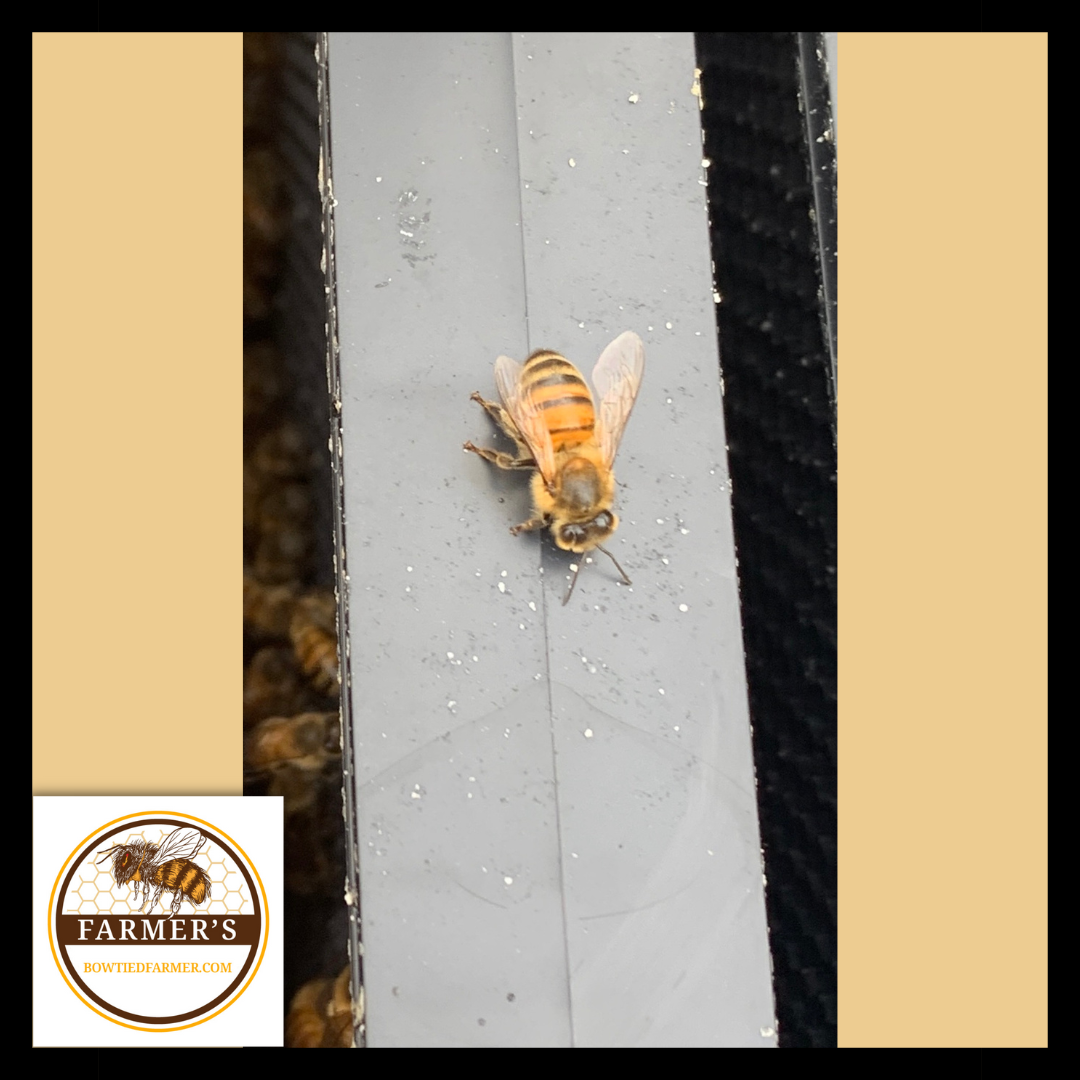
Pure Raw Honey
When you see a label on the jar of honey stating pure raw honey, it means several things.
-
The pure means that the honey only consists of one ingredient, honey. Many large honey bottlers mix honey with other artificial ingredients like corn syrup to reduce costs. Pure Honey has no other ingredients.
-
Raw honey is pure honey that has not been heated or filtered. It means the honey is "straight from the hive"
We'll cover the details of raw honey label meanings in detail below. We provide even more information about the differences in raw honey and regular honey, the proven health benefits of raw honey, and much more. After reading this article, you should have no problem choosing honey for yourself or your loved ones.
Pure Raw Honey
Choosing honey with the words "Pure Raw Honey" on the honey jar label means that you are getting honey, without any other ingredients (such as corn syrup, which is sometimes added to industrial honey to reduce costs).
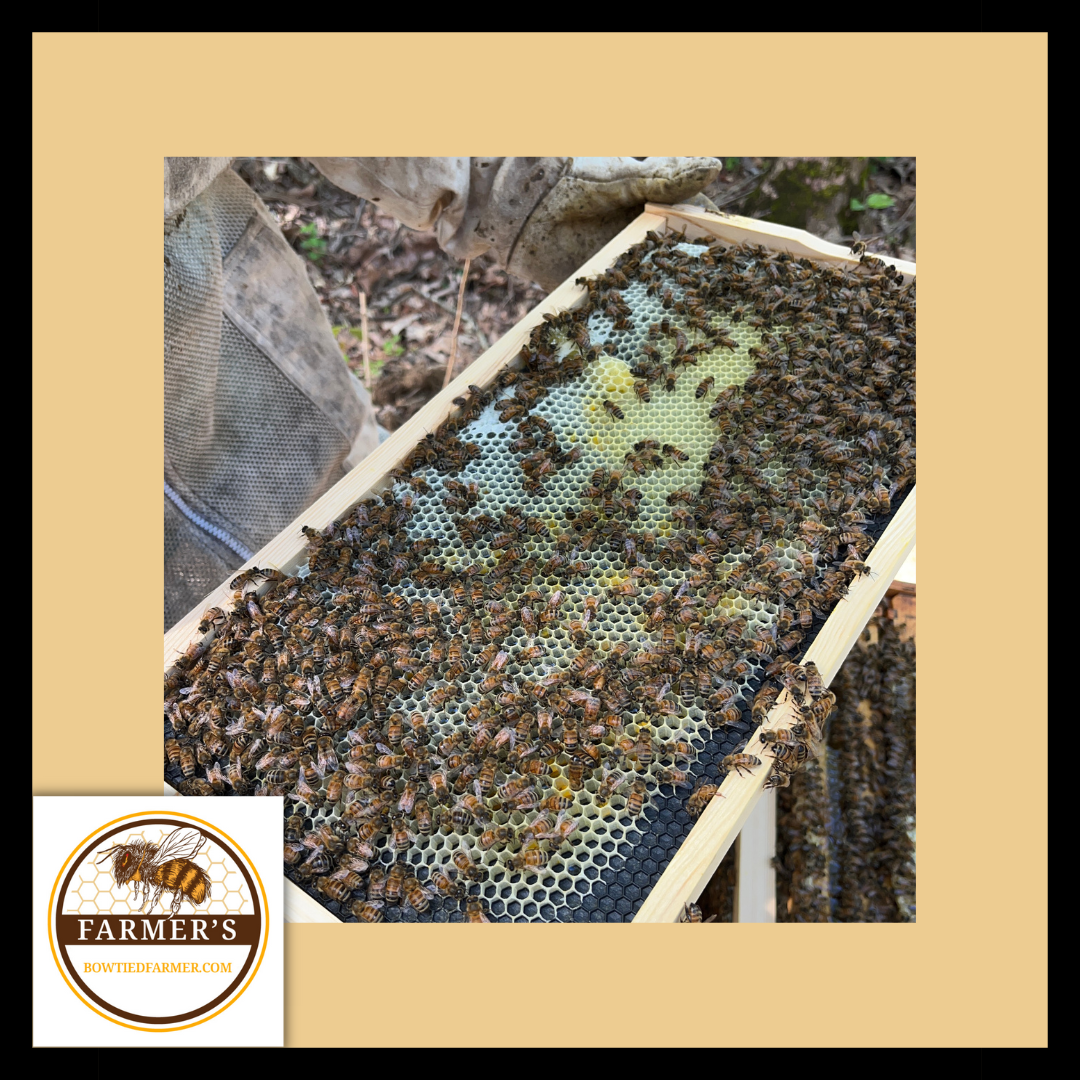
However, the pure honey label alone doesn’t always tell you much about the varietal or how the honey is produced, so it’s good to look for more information to make sure you’re getting all the benefits you can from honey when it’s produced in the most bee- and environment-friendly way. For example, pure honey does not mean raw honey.
Pure honey can be pasteurized (heated well about 118 F) and ultra filtered (chemical process to filter honey). Both of these processes significantly diminish the benefits that raw honey provides to your health, not to mention the taste. Luckily, there is a better choice when choosing honey, you want one that comes straight from the hive, is aesthetically appealing, tastes sweet, and is delightful to eat.
Raw Honey has entered the chat.
Raw Honey
Raw honey is pure honey that has not been heated to the point of pasteurization (no higher than 118°F). Furthermore, honey that has been through an ultra filtration process is not considered raw honey either. Honey with an "unfiltered honey" label means that it has not been ultra filtered. It's an extra buzz word that is really not necessary since honey that is truly "raw" cannot be filtered. Raw honey is unfiltered honey by definition.
Hint: you can get Farmer's Premium Raw Honey shipped right to you, it's so easy!
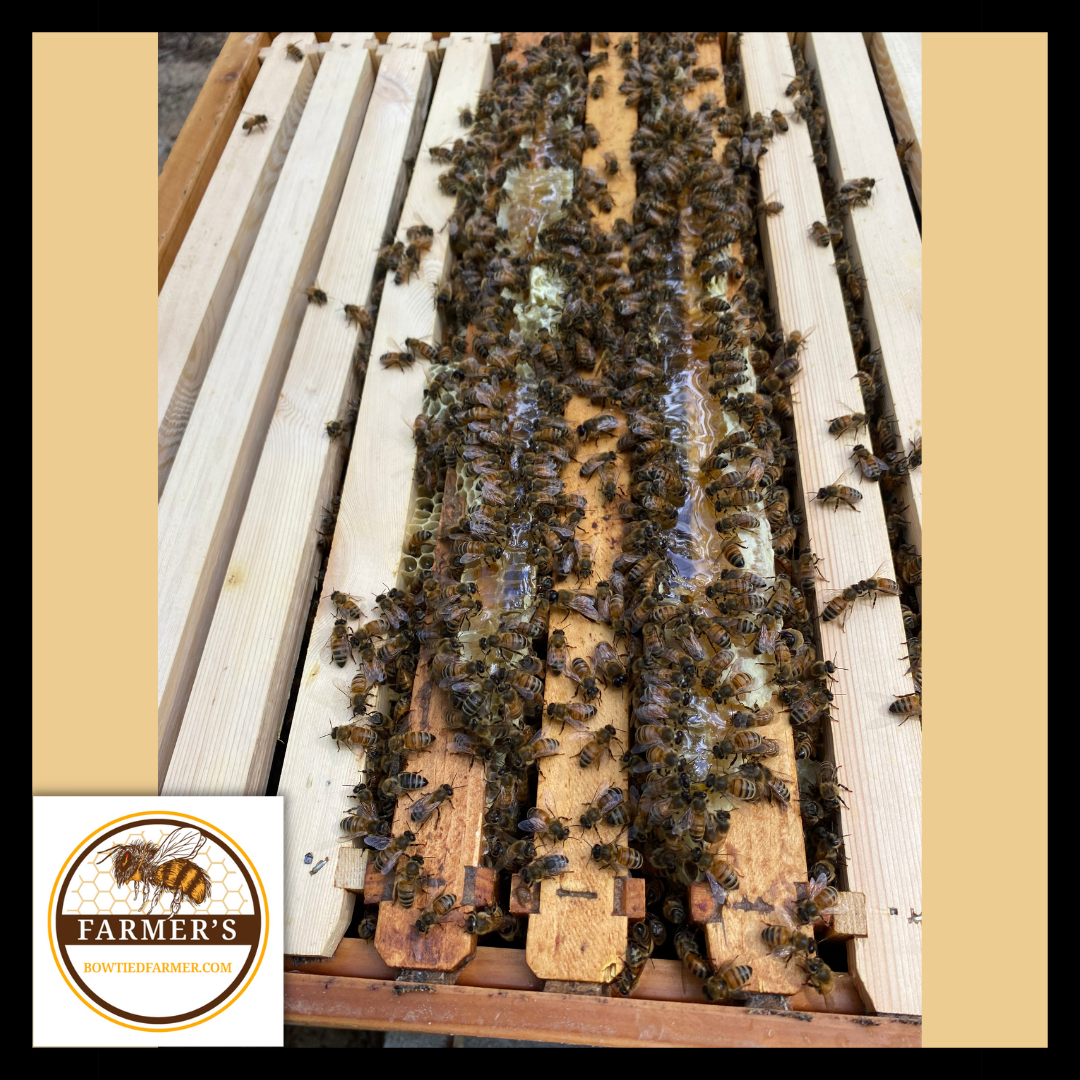
The benefits of honey that has not been pasteurized or filtered are staggering. This is because these two processes severely impact the amount of natural amino acids and enzymes that are found in raw honey. It's best to find pure, raw honey so that all of the naturally-occurring enzymes, vitamins and minerals are preserved and you get the many health benefits of them from eating raw honey.
Raw honey is the best honey.
Raw honey is pure honey that has been lightly strained to remove large foreign particles and put straight into honey jars.
Raw Honey is honey that is in it's natural form. It's the closest thing you can get to the ancient super food from honey bees.
Regular Honey vs Pure Raw Honey
Regular honey is what you normally find in grocery stores . They are usually bottled by a large distributor with the bottles having labels without much character or local "touch" to them.
You can tell right away that this honey has been highly processed by checking the ingredients label. If there are any other ingredients besides "honey", the product is not raw or pure honey.
Hey if you got time, we got a full guide on raw honey vs regular. But otherwise, let's keep it buzzin.
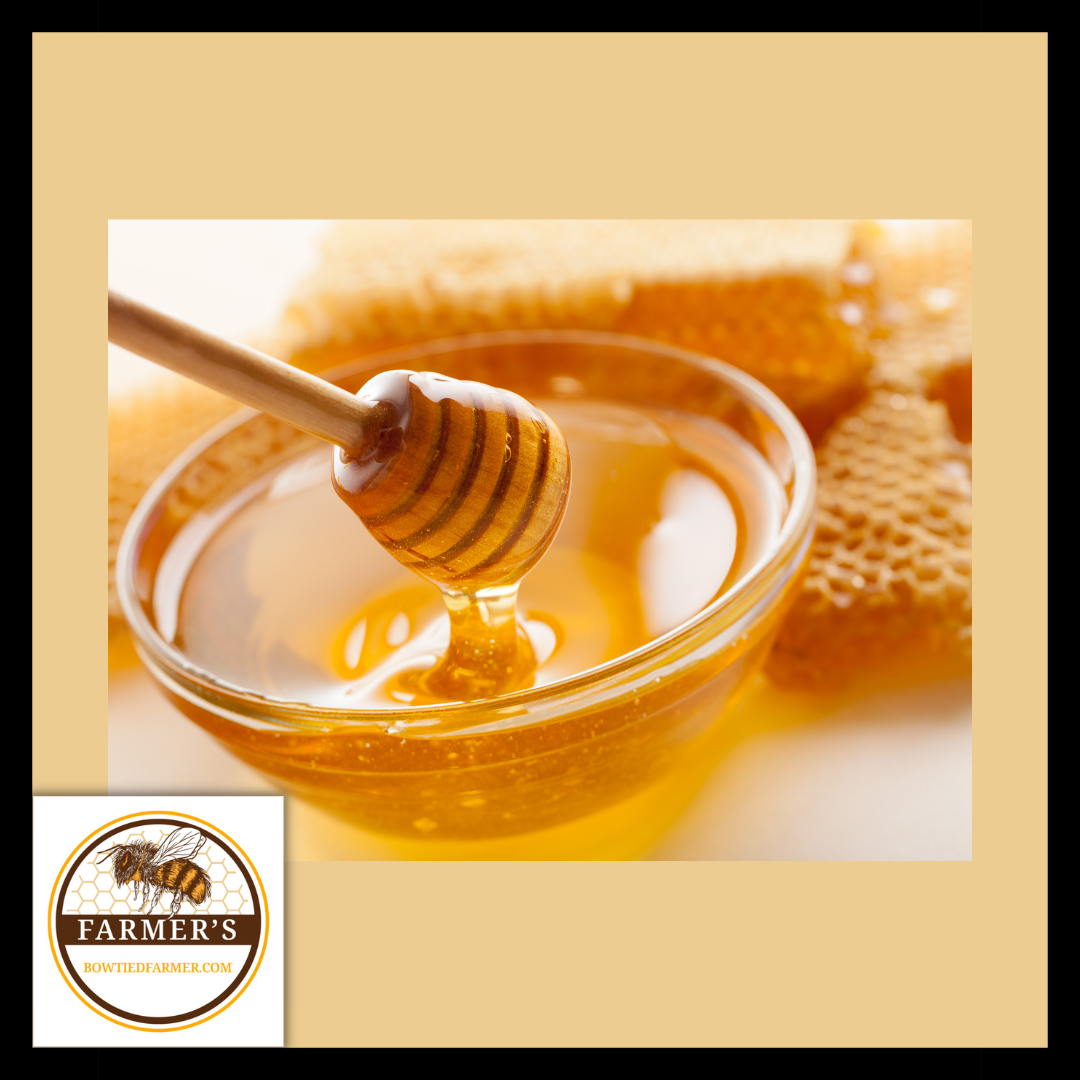
It's important to note that the honey industry is plagued with bad actors. The growing demand for honey for its health benefits as a high quality food, coupled with its increased economical value makes honey a vulnerable adulteration target. The majority of honey sold on the market is caramelized sucrose with added sweeteners that does not have any nutritional value. Since this adulterated material does not have the nutritional value that honey has, consumers have lost sight of the nutritional value of honey. (Source)
Adulterated honey can cause adverse health effects since the added sugars are different than unfiltered raw honey. Often when adulterated honey is blended, heat is required which further destroys the health benefits of honey.
Unfiltered Honey is pure raw honey
A honey label that only states the words "honey" is usually honey that has been through a process known as ultra filtration. This a specific kind of filtration used in the food industry, and should not be confused with other light straining methods generally used in the honey industry for processing raw honey.
When applied to honey, ultra filtration involves adding water to honey and filtering it under high pressure at the molecular level, then removing the water. It is a much more involved and expensive process, which results in a colorless sweetener product that is derived from honey but is not considered honey in the U.S. It can then be mixed with colors and artificial sweeteners to appear like honey.
Completely unfiltered, and un-strained honey may contain particles of bees, bugs, honey comb, and more that can be found in honey due to the nature of honey extraction. Most honey suppliers lightly strain their raw honey for this reason.
Honey that has been lightly strained is still considered raw honey and it is still considered unfiltered.
Adulterated honey is not pure raw honey
Several different avenues are available for honey producers who are trying to gain economic benefit from selling adulterated honey. The most common honey adulteration methods include:
-
Blending with sugar syrup or high fructose corn syrup
-
Not disclosing the country of origin
-
Honeybee feeding for long duration well into the honey production season with high fructose corn syrup or sugar syrup
-
Blending honey with lower quality honey
-
Adding sweeteners or other flavors to improve taste
Testing for Pure Raw Honey
There are different scientific methods to detect adulterated honey. Many of them require laboratory equipment and significant testing in order to determine how much alliteration has occurred and what materials the honey was adulterated with.
Some visual tell tale signs that honey has possibly been adulterated include:
-
Honey that doesn't crystallize. All pure honey will crystallize over time. Keep reading to learn more about crystallization.
-
Overly runny. Honey should be thick. While it is perfectly normal for certain honey's to pour from a jar, it shouldn't be extra thin or abnormally runny.
Some at home tests for honey can help you determine the quality of honey:
-
Put 2-3 drops of vinegar in a spoonful of honey, pure honey should not foam
-
Put a spoonful of honey in a glass of water, pure honey will not dissolve quickly.
-
Put a small amount of honey on a cotton swab and carefully light with match. Pure honey should burn or at least start bubbling.
-
put a small amount of honey on a paper towel and fold it. Pure honey will not seep through to the other side like water.
The bottom line for ensuring you're getting quality honey is to get to know your source. Its best to buy honey from a real farmer that is transparent and open to discuss his honey production methods.
Shop Farmer's Honey now.
Pure raw honey benefits, risks, and uses
There are differences between raw and regular honey that you should know about. There are no known risks to consuming raw honey. However, there are many risks to consuming regular honey that has been adulterated with corn or other sugar syrups.
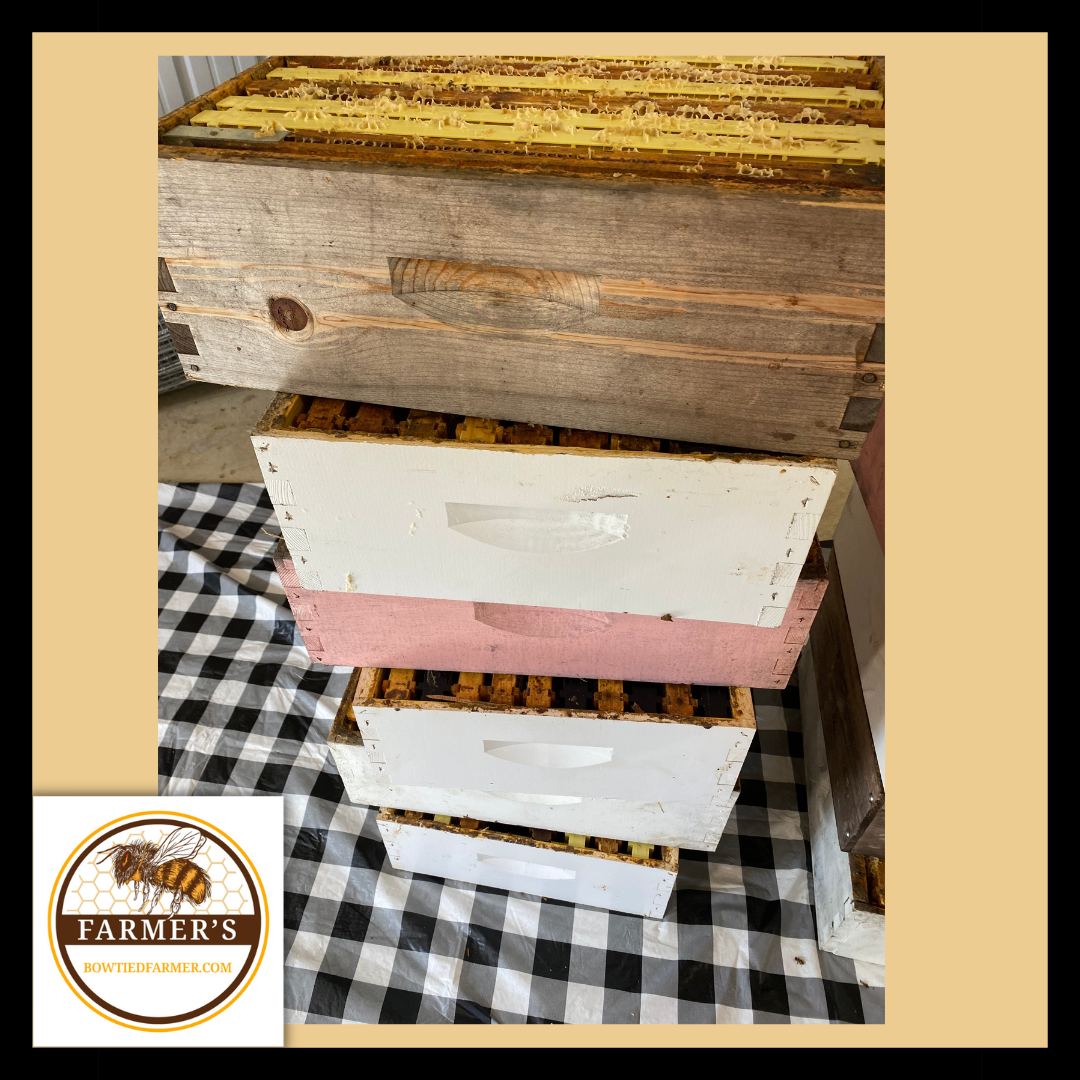
As previously discussed, pure raw honey has not been adulterated in any way. Therefore, it contains all of the natural health benefits. Raw honey has not been heated, and is a super food packed with nutrients. Regular honey cannot be fully trusted since a bottle of honey without any label stating "Pure" or "Raw" could mean that the honey is adulterated, or imported from a country with bad business practices.
The differences between raw and regular honey are huge. Here are some of the health benefits that raw honey offers, which regular honey may not (source):
-
Lowers blood glucose in diabetes
-
Cancer fighting characteristics
-
Natural sore throat remedy
-
Extends gastric emptying time
-
Immunity booster
-
Antimicrobial properties for wound healing, athletes foot, acne, eczema, lip sores, genital lesions, burns, and surgery scars
-
Reduces cholesterol, triglycerides, c reactive protein, and homocysteine
-
Helps with symptoms of laryngitis, osteoporosis, gastrointestinal ulcers, anorexia, insomnia and constipation, and liver, cardiovascular and gastrointestinal problems
-
Natural anti inflammatory activity
On the other hand, there are several risks to consuming adulterated honey.
-
weight gain
-
an abnormal parameter in renal and hepatic function
-
a rise in the level of circulating triglycerides, cholesterol and glucose levels
-
fat deposition augmentation
-
severe organ toxicities
-
liver and kidney dysfunction.
Pure raw honey is more nutritious
Out of all of the honey labels raw honey is the best label to look for because it packs the most nutrients without any added sugars or adulterants. Raw honey contains the most bee pollen since it has not been highly processed. Bee pollen is packed with nutrients that add to the benefits found in honey. Some of the nutrients you can expect from raw honey include:
-
ascorbic acid
-
pantothenic acid
-
niacin
-
riboflavin
-
calcium
-
copper
-
iron
-
magnesium
-
manganese
-
phosphorus
-
potassium
-
zinc
Is pure raw honey good for you? YES!
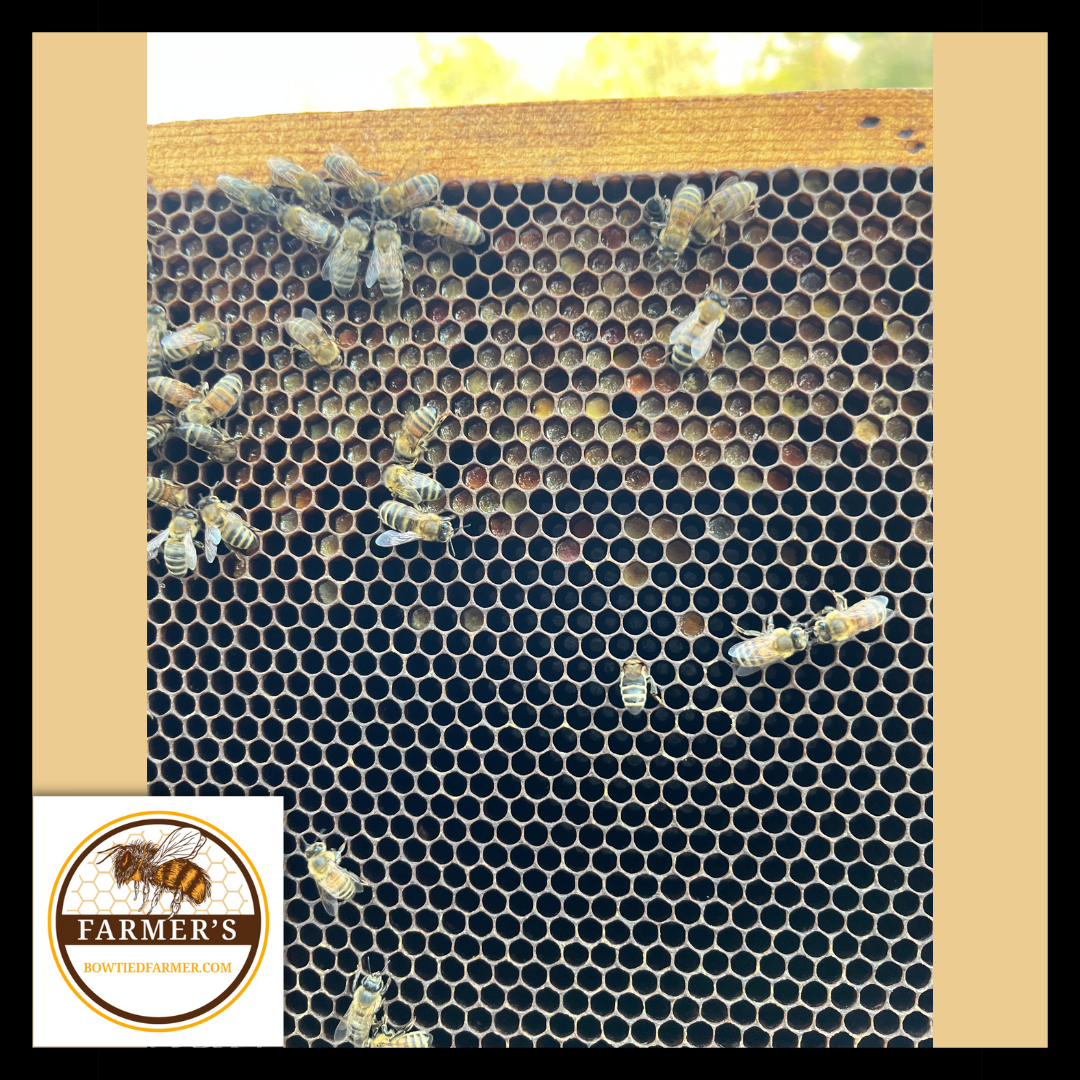
Pasteurized honey is not pure raw honey
Regular Honey that is in jars with no wording specifying raw honey, could mean that it has been pasteurized. Pasteurization of honey is the heating of honey to 160 degrees F and quickly cooled. This process kills all of the yeast cells in the honey which allows it to have a longer shelf life and stay liquid and smooth for a longer period of time. However, if the moisture content of honey is below 18%, which raw honey should be, the yeast cells are not able to reproduce at all anyway.
It should be noted that pasteurization of honey is different from milk pasteurization due to the low moisture content in honey. The low moisture content found in honey naturally, prevents harmful bacteria and any other harmful organisms from growing. Therefore, honey pasteurization is highly unnecessary. Raw honey is harmless, with no need for high heat other than to make the honey look more presentable on a grocery store shelf.
Heating Honey
Many of the naturally occurring enzymes, amino acids, and vitamins that are found in raw honey are destroyed when heated to 160 degrees. Honey should not be heated rapidly, over direct heat. Basically, the hotter you heat it, the more potential for reducing nutritional value. Excessive heat can have detrimental effects on the nutritional value of honey. Heating up to 37°C (98.6 F) causes loss of nearly 200 components, part of which are antibacterial. Heating up to 40°C (104 F) destroys invertase, an important enzyme. Heating up to 50°C (122 F) for more than 48 hrs. turns the honey into caramel (the most valuable honey sugars become analogous to sugar). Heating honey higher than 140 degrees F for more than 2 hours will cause rapid degradation. Heating honey higher than 160 for any time period will cause rapid degradation and caramelization. Generally any larger temperature fluctuation (10°C is ideal for preservation of ripe honey) causes decay.
(Source)
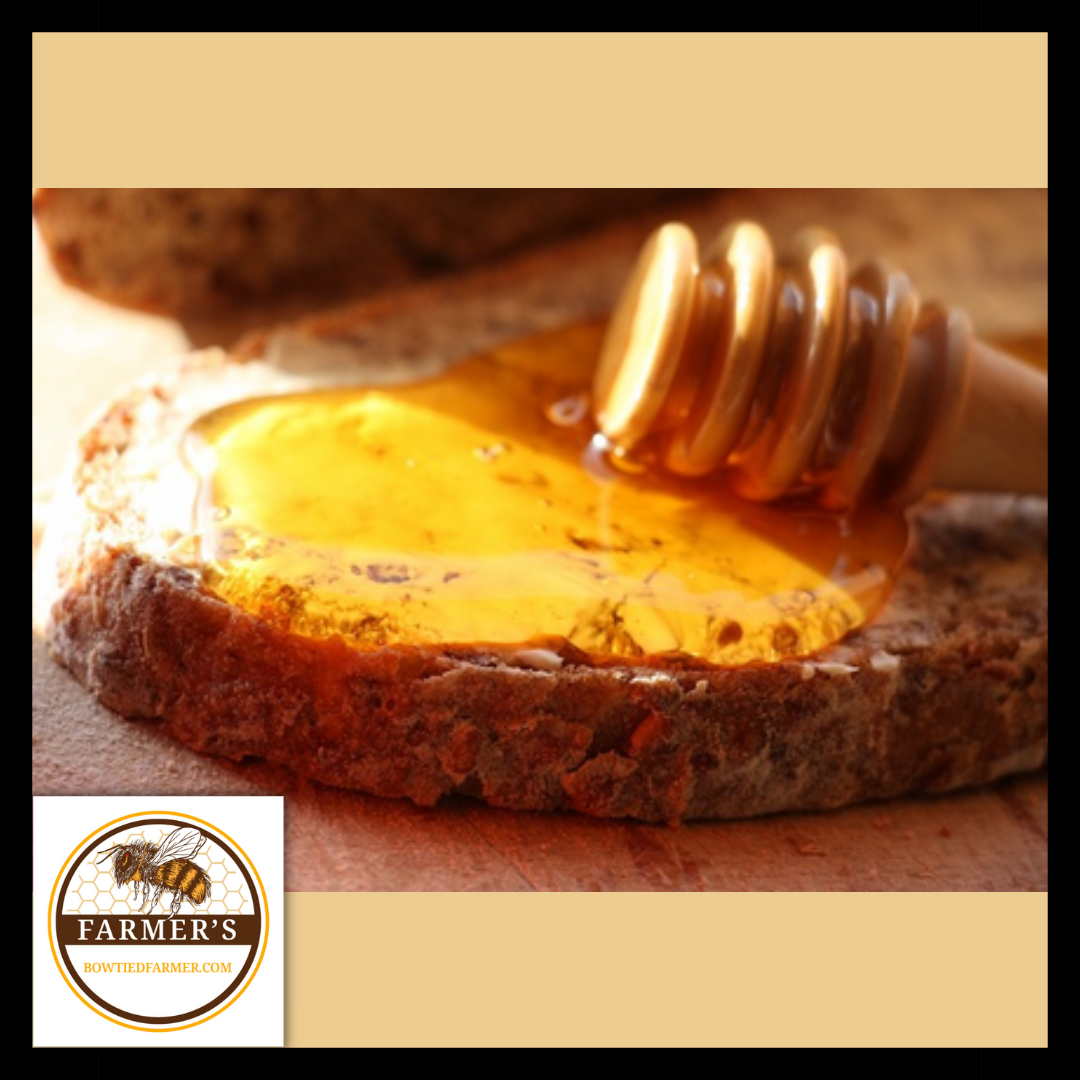
There are some claims that honey should not be heated at all, to keep all of the proven health benefits of pure raw honey in tact. However, simple physics applies to honey as well. Honey will not flow easily if it is cold. In order to transfer honey from the hive, into a jar, it must flow. Therefore, many raw honey producers in colder regions are forced to lightly heat honey in order to harvest it.
Likewise, honey producers in hotter regions have beehives that are in locations reaching well over 100 degrees in the middle of the summer, prime honey producing months. To think that this honey sitting in the hive is lacking enzymes and vitamins due to the temperature of the honey in its hive, doesn't make much sense.
Therefore, a good rule of thumb is for honey producers to restrict heating of honey above the temperature of the hive. This allows for producers in colder regions to heat their honey to the temperature of the hive, which is surely hotter than the harvested honey, so that they can bottle it efficiently. Producers in hotter regions shouldn't need to heat their honey for bottling, but if they do, they can heat it back up to the same temperature of the hive in the field without damaging the nutritional qualities of the honey.
Crystallization will occur in pure raw honey
Raw honey begins to crystallize when it's temperature is dropped below 72 degrees F. Honey is a super-saturated solution of primarily two sugars: glucose and fructose. It is a natural process for some of the sugars in a super-saturated solution to eventually come out of solution. Bee pollen can act as a seed for the formation of crystals, but the ratio of glucose to fructose is the main factor causing crystallization. All raw honey will crystallize due to glucose. Some reasons for honey crystallization are:
-
Bits of pollen in raw honey provide an excellent substrate to encourage crystallization.
-
Low water content in honey helps to keep if from fermenting, but also allows easier crystallization.
-
Nectar from different flowers varies in its ratio of glucose to fructose and can influence how fast crystallization happens.
When honey crystallizes, it becomes thicker (if tiny crystals are forming) and cloudy as more crystals form). Some crystallization results in a coarse sugary texture and some in a creamy texture. You can’t prevent it, but you can delay crystallization by keeping your honey in a warm location above 72 degrees Fahrenheit, maybe near the stove (not the cold cupboard against an outside wall).
If your honey crystallizes, eat it! It tastes amazing! If you don’t like it crystallized, place the jar in a pot of warm water at about 100 degrees Fahrenheit for around 15 minutes.
Organic honey is not always pure raw honey
Organic honey is produced from the pollen of organically grown plants, and without chemical miticides to treat the bees. Buying organic honey claims to ensure that you avoid contact with pesticides that may be sprayed on or near the plants visited by honeybees. Of course, bees usually fly up to 2 miles from the hive looking for flowers, which means that all the flowers within this 2-mile radius must be certified organic in order for the honey to truly be organic.
It’s also important to remember that honey labeled “organic” is not necessarily raw or minimally processed unless labeled as such. Much of the certified organic honey available in the United States is imported in large quantities from Brazil or other foreign countries and undergoes pasteurization and heavy filtration. Look for both raw and organic honey on the label.
At the end of the day, there's no way to be sure that honey is completely organic honey without testing each bottle. However, it is a good goal to strive for by reducing the use of chemicals in beehives. Most chemicals are used on hives during months when honeybees are not producing honey, which reduces the possibility of contamination.
The use of chemicals for treating honeybees for varroa mites is almost required in certain areas. These pests can be devastating to honeybee colonies. There are other organic miticide options that are showing positive results in deterring varroa mite infestations. Even these organic solutions can contaminate honey just because it is considered organic honey it's still a good idea to find a source of honey that you can trust.
Wildflower Honey
This is an extra descriptive term used to describe honey that is made from pollen of wild, naturally growing flowers in the area of the hive. To be honest, most local honey is probably wildflower due to the nature of honey production and the amount of pollen required by a hive to produce honey. Special plant descriptive terms can be used for hives located in orchards or areas predominantly growing certain crops or fruits such as “orange blossom”.

Regulations on pure raw honey
It’s important to note that none of these terms for describing honey are regulated by the FDA or USDA. These agencies only require that blended honey with sweeteners be labeled properly. So there is a real gray area in these certifications for honey due to the nature of how honey is made.
What’s more is most organic honey comes from other countries where it is definitely not regulated and the honey is highly refined through pasteurization.
As you can see, you can’t always go by what the label says. I recommend tasting different sources to find a supplier that tastes good to you, preferably from someone you can trust. Like us!
Buy pure raw honey
Farmer's Premium Raw Honey is Pure Raw Honey. It comes from a real beehive.
It's bottled and shipped to you with no middle man, not heat, and no filtration. We even make the best No Mess Honey on the market.
We offer many different sizes for you to choose from as well as glass or squeeze jars to meet your daily raw honey needs. We can ship anywhere in the US, premium raw honey makes a perfect gift.
